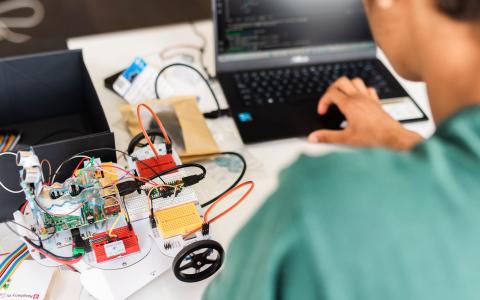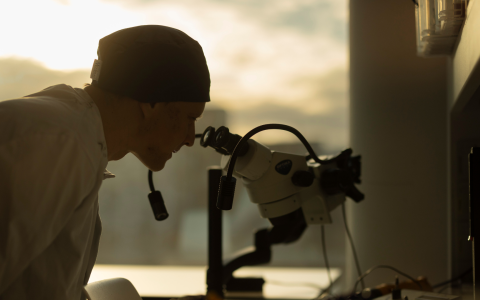
‘Build a Brain’ course empowers next generation at London AI Campus
By Alison Cranage
Our homes are filled with ‘black boxes’ – from mobiles and tablets to smart speakers and TVs. We know how to use them, but in most cases, we don’t know how they work.
A new course for secondary school students aims to change that. Developed and run by No Black Boxes in partnership with Camden Learning, Google, and the Sainsbury Wellcome Centre (SWC), the ‘Build a Brain’ course equips students with the knowledge, equipment and tools to build their own robot, learning about everything from electrons to AI along the way. Their robot is modelled on the ultimate black box – the brain.
The course recently wrapped up at the new London AI Campus in Camden – where participants showcased their robot's capabilities. In front of an audience of parents, local councillors, mentors and supporters, the robots and their creators demonstrated their skills in races, balloon popping competitions and face recognition.
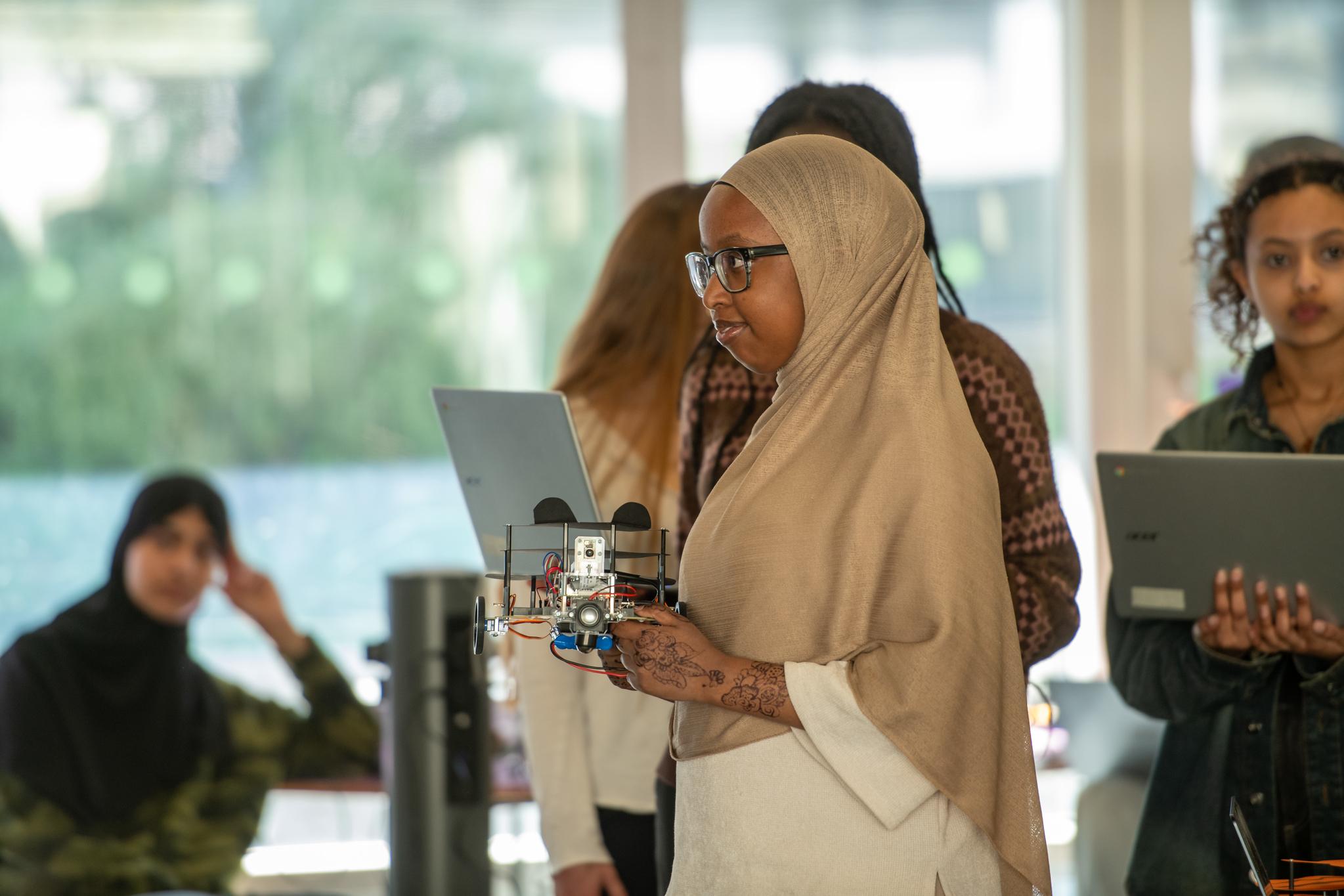
Students at the project finale. Credit: Camden Learning.
The ‘Build a Brain’ course at the London AI Campus was made possible thanks to the generous support of the JFCT Foundation.
Making a brain using no black boxes
The showcase event started with Dr Elena Dreosti, a neuroscientist at UCL and co-founder of No Black Boxes, outlining the 12-week course. She described how the lessons moved from the periodic table to electrons to magnetism to sensors and motors as the robots took shape.
“This course isn’t just about building robots, it’s about understanding what technology is made of. We start at the very beginning and build a real example of modern technology from scratch. Nothing is hidden. With this foundation, the students really take control, turning their own ideas into new creations.” – Elena Dreosti
The robots mirror the basic anatomy of the brain, and include sensory inputs, processors and motor output. The students learn how to build a brain without using any black boxes. They learn about transistors and amplifiers, build circuits, and program microcontrollers, covering logic, memory and algorithms.
Volunteers from the SWC and the Gatsby Computational Neuroscience Unit took part in the course as teaching assistants throughout the sessions.
“It’s great to see people who have never done any programming take part. They think they don’t know how to do any of this. And after a while, they realise that it’s not some sort of arcane magic - it's actually something that you can learn” - Dr Svenja Nierwetberg, Research Fellow at SWC and teaching assistant on the recent Build a Brain course.
The later stages of the Build a Brain course covered websites, networks, servers, security, audio, vision, learning and AI as the robots became increasingly sophisticated.
“It was great to see the students gaining practical experience – the class is completely hands-on. They’re also getting involved with AI, which is very much the zeitgeist at the moment, and working with experts from Google and DeepMind. It’s a fantastic opportunity.” – Luke Johnston, an intern at the Gatsby Computational Neuroscience Unit and teaching assistant on the Build a Brain course.
After eight sessions, there was a four-week project period, where students designed, built and added any capabilities they wanted to the robots, in preparation for the showcase.
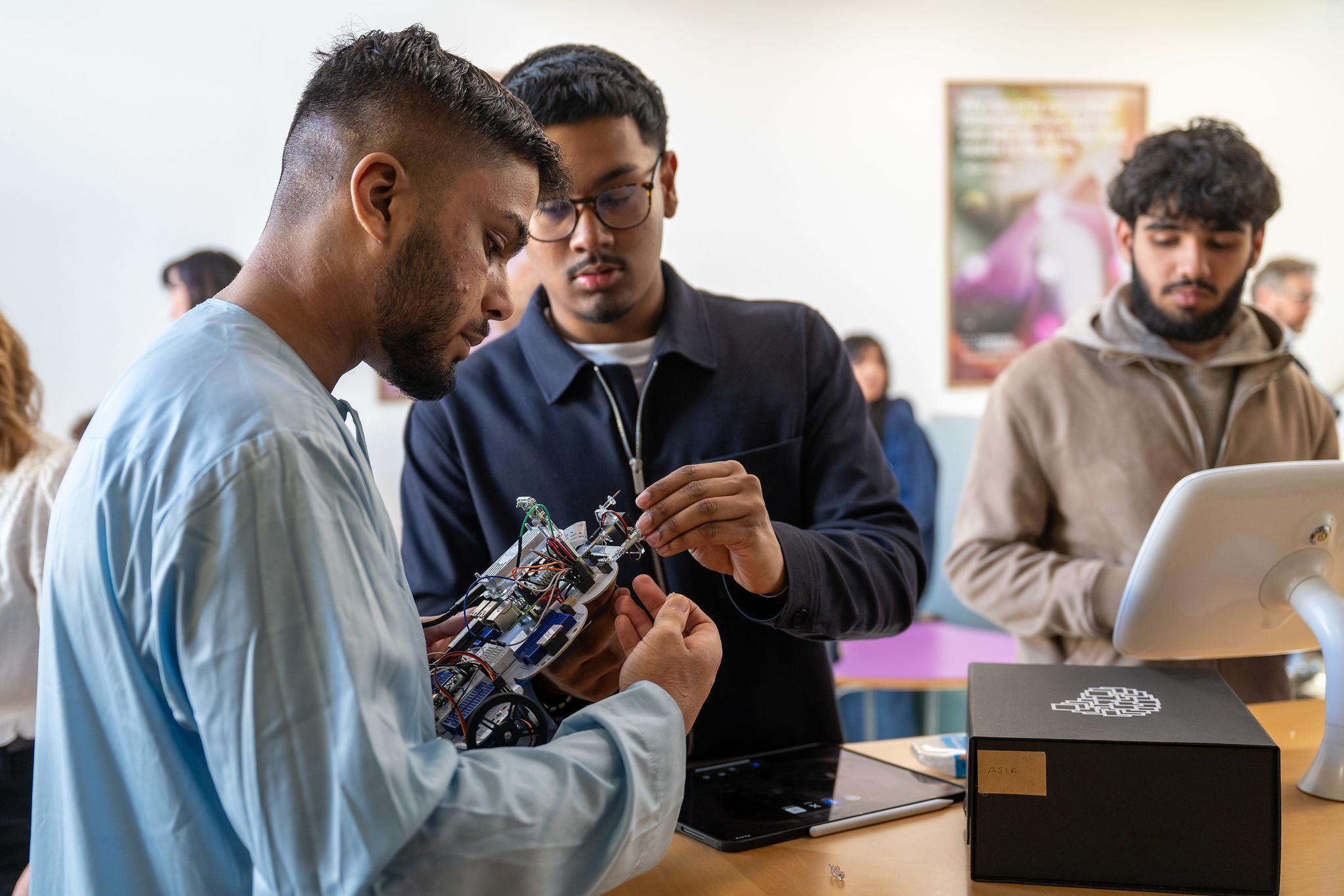
Students at the project finale. Credit: Camden Learning.
Black boxes in neuroscience
It’s not just homes that are full of tech. Laboratories are filled with complex equipment, too.
For Adam Kampff, co-founder of No Black Boxes, a neuroscientist and former group leader at the Sainsbury Wellcome Centre, this is a problem. “I see these devices, that we don't really understand, as a black box. And many people are ok with this. You can use it to do what you want to get done. But this is not ok when you're supposed to make something new.”
It was Adam’s passion for education and tech that led to him found a new company in 2020 with the aim of improving the relationship between brains and their tools. As part of this, Adam and Elena created training materials – the precursor to the Build a Brain course.
This first course was developed for students at the Sainsbury Wellcome Centre, and then, in partnership with the Cajal Advanced Neuroscience Training Programme, expanded its reach to neuroscience students around the world, reaching over 500 students in 69 countries. The course aims to give students a comprehensive introduction to neuroscience and technology, by creating an increasingly capable robot. The principle being that neuroscience PhD students are tasked with studying the most complex black box in the universe, the brain, and they should not have any manufactured black boxes in their way. A three-week bootcamp course is now standard for all SWC students embarking on a PhD.
From neuroscientists to everyone
Since the first courses for university students, the content has been adapted for a range of learners. The hands-on approach of building a robot empowers anyone who takes part with a complete picture of technology, all the way from electrons to intelligence.
Dr Ben Jerry Gonzales, a Research Fellow at the SWC, also joined the most recent course as a teaching assistant. He reflects on the experience. “Firstly, I think it is an important reminder that all knowledge is learned. Everyone starts from zero, and there is no such thing as a silly question.
“Also, I think that to teach a concept effectively, you have to deeply understand it yourself. You need this to be able to convey it clearly to a student’s brain. This course demonstrates such clarity in topics that can seem daunting or mysterious, such as electronics, electrophysiology or magnetics.” He also stressed the importance of scientific knowledge in the modern world.
“Everyone at SWC is in a privileged position to be exposed to insights from neuroscience. Most people don’t have an insight into the engine that makes everything tick. The one that controls our behaviour, our emotions, everything.”
“It should be our mission to deliver neuroscience to the population and I think it is time that neuroscience got centre stage in public common knowledge and early education.”
April Cashin-Garbutt, Head of Research Communications and Engagement at SWC, who helped make the course possible, commented:
“SWC is proud to support Build a Brain, from facilitating its origins to building connections and providing opportunities for researchers to contribute as teaching assistants. Empowering the next generation to understand the technology they use is central to our mission of sharing our science for societal benefit.”
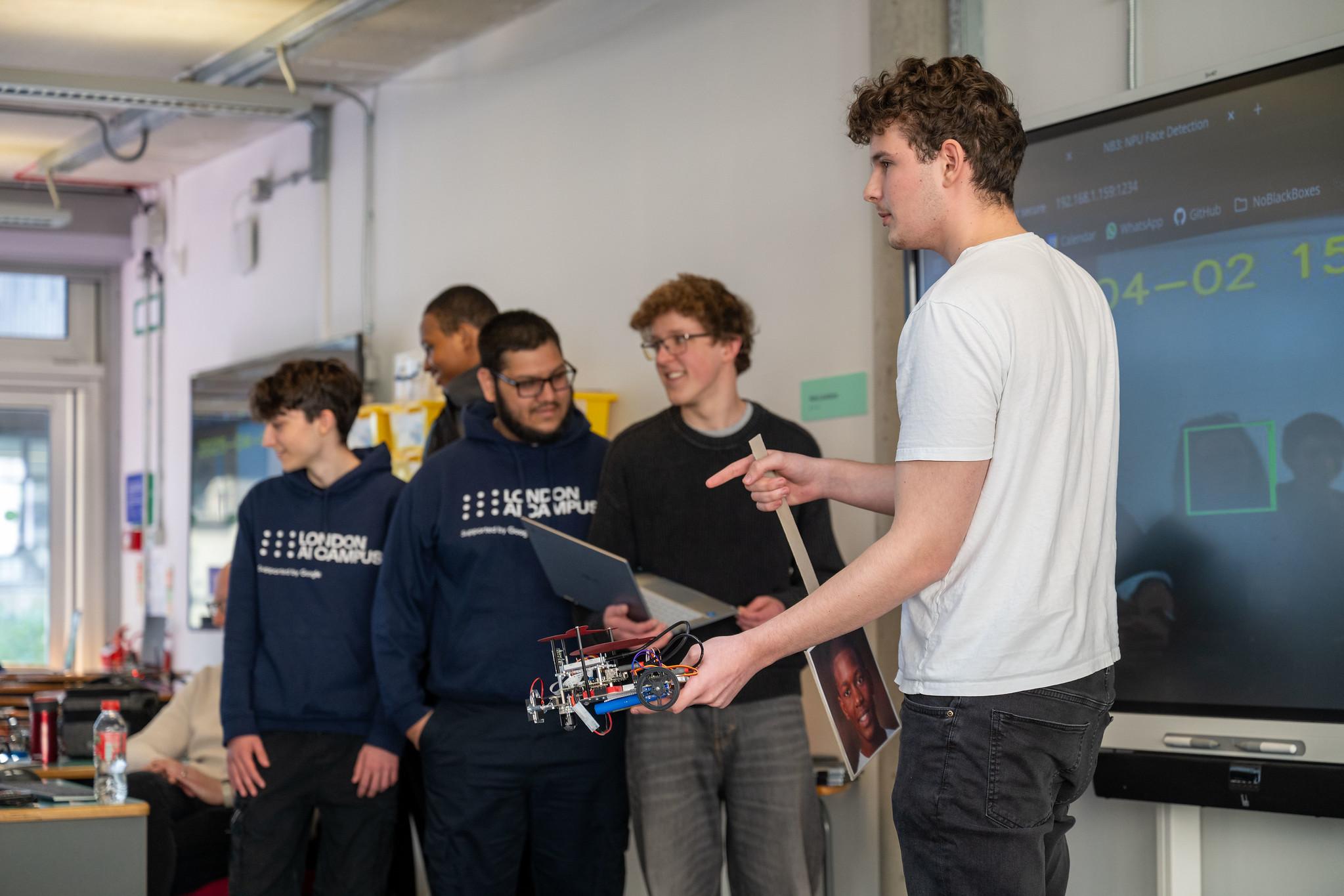
Students at the project finale. Credit: Camden Learning.
More information
- Access The Last Black Box: Build a Brain materials on GitHub.
- Visit the No Black Boxes website to find out about upcoming courses.
- Read more about innovation at SWC.
Image credits: Camden Learning
